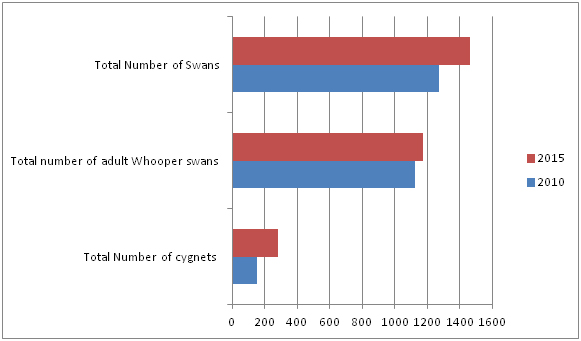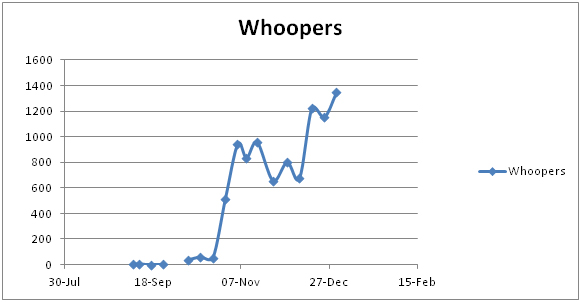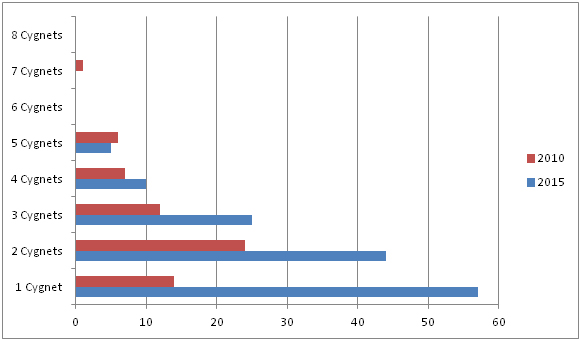Boom year for cygnets at Martin Mere in 2015
The International Swan census has been in active since 1995 and takes place every five years to compile the numbers of both Bewick and Whooper swans and to give an estimation of their population. The survey incorporates census numbers compiled from British, Irish and Iceland data.
Results for Martin Mere
From the 17th January until the 18th January volunteers and staff have taken part in the annual survey conducted to monitor the Whooper swan population at Martin Mere over the winter months. This year, the census reported that Martin Mere had a boom year for cygnets, recording numbers compared to the previous census taken in 2010.
This year we recorded 1462 Whooper swans across the Mere on the Sunday including 285 juvenile cygnets. This meant 19% of our swan population for 2015 were cygnets, which is an increase of over 3% compared to last year’s count at Martin Mere. This is huge increase in the numbers recorded at Martin Mere in 2010, in which we counted 1276 Whooper swans with only 151 cygnets were recorded (12%).
How do they count the swans?
Our dedicated volunteers arrive in the morning to count each individual swan on the mere, equipped with a pair of binoculars and two clickers, one to count the swans and one to count the number of cygnets to give us an accurate number. The team juggles between clickers and using their binoculars to gauge the correct number of swans and cygnets on the Mere as well as also using their binoculars to take note of the number and size of the broods spotted on the mere.
Whooper Swan numbers
The graph shows the overall population of Whooper swans spotted at Martin Mere over the past seven months, as you can see we have had our highest number of Whooper swans just in time for the International swan census.
The Whooper swans have seen their population increase by almost 11% worldwide during the time between the 2005 census and the one taken in 2010. Also over a ten year period from 2002 to 2012 Whooper swans saw an increase in their population of 37% in Great Britain.
Broods
This year’s census saw a record number of broods containing only one and two cygnets. Our volunteers meticulously counted each brood individually using their two clickers and binoculars allowing them to get an accurate number of whooper swans at Martin Mere this year.
The birding experience at Martin Mere is fantastic at this time of the year with around 1500 whooper swans descending on the mere with two regular daily feeds taking place at both 3pm and 3.30pm. The swans will be staying at Martin Mere until the end of March before they migrate back to Iceland for the summer months, so don’t miss out on seeing these amazing animals before they leave for the summer in just over six weeks time.




